Crassula is a genus of succulent plants containing about 200 species, including the popular jade plant (Crassula ovata).
They are usually propagated by stem or leaf cuttings. Some forms will tolerate a small degree of frost, they are very few; extremes of cold or heat will cause them to lose foliage and die. Of the many varieties only three are frequently grown as bonsai and of those, only one can remain outdoors in winter
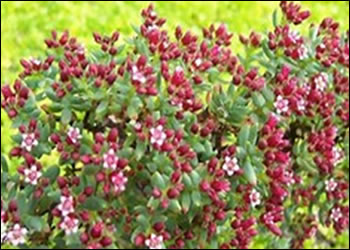
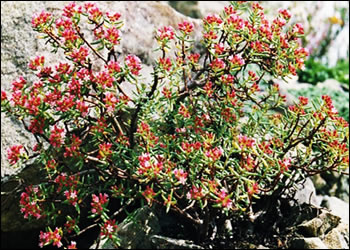
Crassula sarcocaulis
This is a small shrubby succulent plant. It is a perennial plant native to the eastern half of South Africa. It has small pink or white flowers that appear in summer. The flowers are described as smelling like honey. The plant grows to about 30 – 50 cm.
Cultivation:
This hardy little plant is among the most tolerant of cold temperatures in its genus, (down to around -12 °C) as well as being heat-tolerant. It is also drought-tolerant and generally disease-free, but can be affected by aphids, mealybugs, and vine weevils. It can be grown indoors or outdoors with full or partial sunshine, but full sunlight is preferred. Like most succulents, it prefers well-drained soil and only occasional watering. As bonsai they are best grown as clump style or small groups. They do not respond to wiring as the fleshy branches snap when bent; instead they respond well to simple trimming.

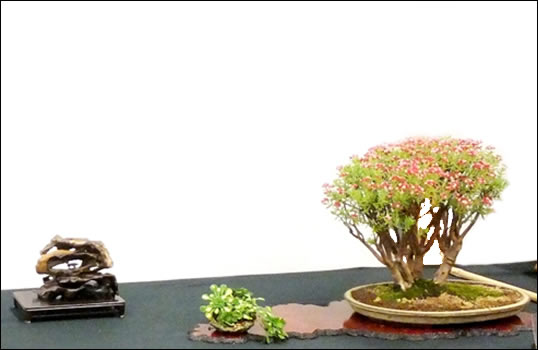
Crassula ovata
Commonly known as Jade Plant, Lucky Plant, Money Plant or Money Tree, is a succulent plant with small pink or white flowers that is native to South Africa and Mozambique. It is common as a houseplant worldwide. Much of its popularity stems from the low levels of care needed; the jade plant requires little water and can survive in most indoor conditions. It is sometimes referred to as the money tree.
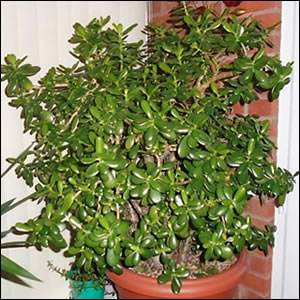

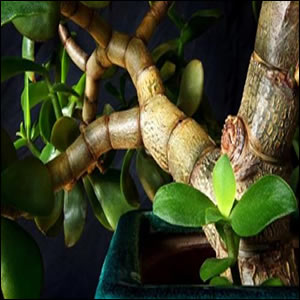
The jade plant is an evergreen with thick branches. It has thick, shiny, smooth leaves that grow in opposing pairs along the branches. Leaves are a rich jade green, although some may appear to be more of a yellow-green. Some varieties may develop a red tinge on the edges of leaves when exposed to high levels of sunlight. New stem growth is the same colour and texture as the leaves, becoming woody and brown with age. The jade plant is toxic to horses, dogs and cats, as well as mildly toxic to humans, in some cases, with skin contact.
It grows as an upright, rounded, thick-stemmed, strongly branched, evergreen shrub and reaches stature heights of up to 2.5 meters. The base is usually sparsely branched. Sometimes a single main trunk of up to 6 centimetres in diameter is formed. The succulent shoots are grey-green. The bark of older branches peels off in horizontal, brownish stripes.

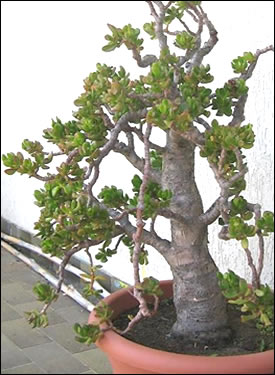
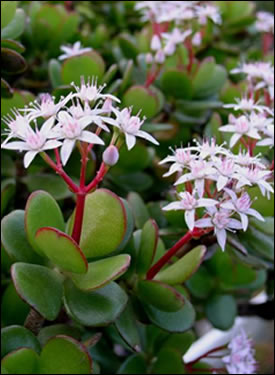
As a succulent, Crassula ovata requires little water in the summer, and even less in the winter. It is susceptible to overwatering, especially during the cold season. Watering excessively can cause leaf fall and root rot. However, also the lack of water can damage it. It should be grown in a porous soil with good drainage. It requires about 4 - 6 hours of direct sun, or medium shade exposures with bright light. In regions of mild weather it can withstand some light frost, provided that the soil is kept dry.
Crassula portulacea
Commonly referred to as the ‘Horseshoe’ or ‘Spoon Jade’, ‘ET Fingers’ or ‘Hobbit Plant’ because their dark green leaves look like fingers with reddish tips. They are very similar to the jade plant but without the toxicity and the leaves are more spoon like than the jade plant leaf.

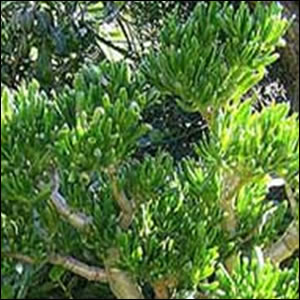

Web design: nysys